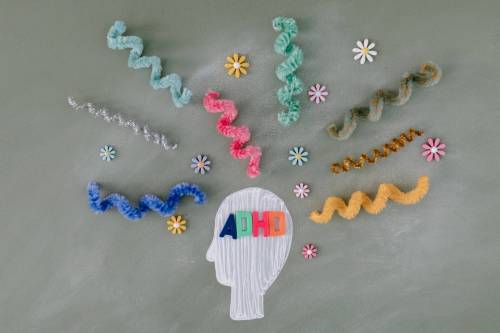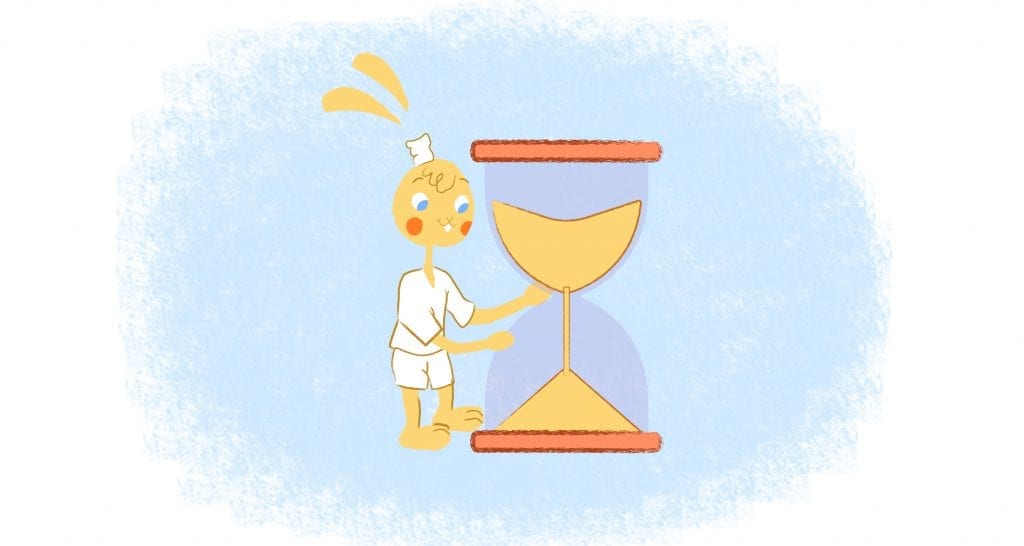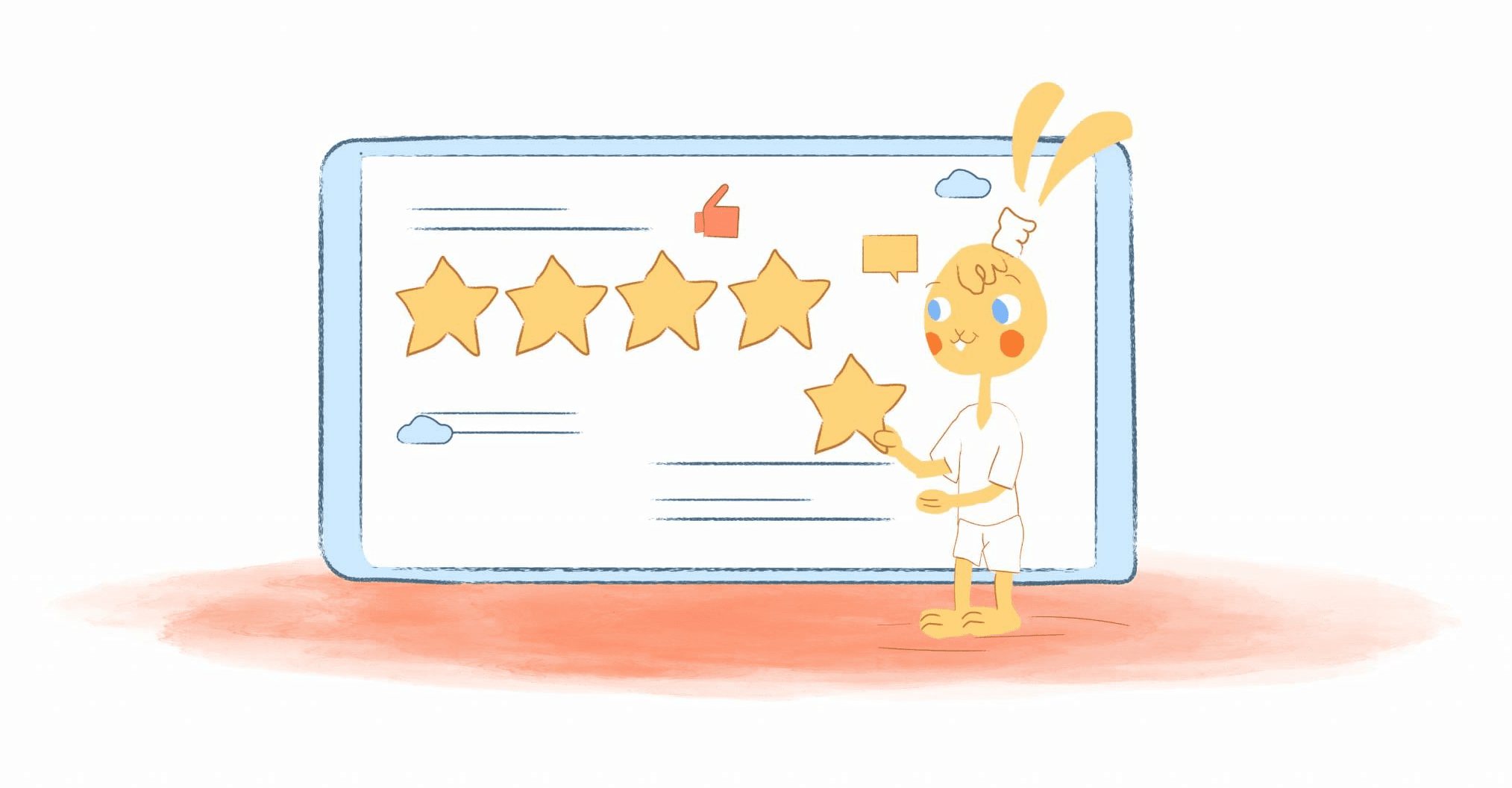

People usually think of ADHD (attention deficit hyperactivity disorder) as something that affects kids. However, it affects about 4% to 5% of adults.
It’s common for adults with attention deficit hyperactivity disorder to be restless, impulsive, and have trouble paying attention. Furthermore, due to time blindness, they think of time differently.
People with time blindness don’t perceive time. It is difficult for people with ADHD to estimate how long things will take or how much time they just spent doing them. Researchers found ADHD causes the brain to distort time. “Brain areas that have been associated with time perception include the left prefrontal cortex, the anterior cingulate, and the supplementary motor area,” explained researchers in a 2021 study.
All these traits lead to deadline problems or trouble showing up on time, including not being able to plan properly, procrastinating, and the ability to ignore the noise around them. Thankfully, there are a few strategies you can use to manage ADHD time effectively.
1. Take a look at time by externalizing it
“People with ADHD don’t understand time as clearly as they should,” explains Ari Tuckman, Psy.D., MBA. They frequently ask questions like:
- What’s due when?
- How long will that task take?
- How long have I been doing this task?
- Is it time to leave yet?
“But that’s OK if you supplement internal abilities with external tools, beginning with plenty of clocks within easy eye-shot,” he adds. “Analog clocks are best because they make the passage of time more visible.” It’s important to see the time, as well as to consciously observe it. Ultimately, success comes from awareness, but it also requires intention.
“Unless you know what you should be doing, it’s hard to make the right decision at the right time,” Dr. Tuckman adds. It’s therefore necessary for most of us to have some sort of schedule. Whether it’s a paper schedule or an electronic one, pay attention to it. If you have a lot on your plate, set reminders and alarms. “Get rid of low-priority alerts, so the important ones stand out,” he advises. “Even if you aren’t perfect about consulting your schedule, having one is better than winging it from memory.”
“I often recommend that my clients put to-do list items into their schedule,” he continues. “Tasks tend to languish on to-do lists (“Is now the time to do that?”).” Being proactive makes it more likely you’ll accomplish things.
Scheduling tasks lets you see how your day fills up so you don’t overcommit. Instead of having a list of tasks to complete, block out time for each one. If your schedule changes or something doesn’t get done, move it. “You will see the big picture: the time you have in the day and the tasks that are beginning to fill that time.”
2. Practice essentialism.
Start by deciding where you wanna focus your time. In Essentialism, Greg McKeown says to decide where you want to succeed. The choice you make will determine how you allocate your time and energy.
The key to being productive is to do what you value most. As an example, searching the internet for business names might be considered procrastination. However, it isn’t unless you are very interested in starting your own business.
It doesn’t matter what you want to excel in: trivia, parenting, your profession, being a partner, or anything else; the next step is to figure out what you need to do. After that, though, you’ll need to take action to achieve your goals.
3. Break tasks into chunks.
It can be overwhelming when you’ve got too much on your plate. But you might be able to preserve your attention if you break things down into chunks.
It is easier to accomplish one goal or task and then move on to the next if you keep your time chunked. Additionally, you get a sense of accomplishment as well as momentum to keep going and accomplishing your goals.
For instance, if you’re writing a blog post or eBook, you might decide to spend the first sitting focusing only on the research. If you have more time, you might want to try writing some body paragraphs after a break.
4. Keep a consistent list of all your tasks.
Put all your essential tasks on one master list, and you’ll be able to “remember to remember.” Try all you might, you’ll never remember everything if you have everything in your head. The results of doing this are probably already obvious to you. In addition to forgetting important tasks, you’re also wasting energy worrying about forgetting others.
As long as you’re consistent about what goes on each list, you can have more than one master task list. What’s most important is that you don’t overcommit yourself. And to prevent that from happening, keep these pointers in mind:
- Look for a planner that works for you based on size, technology, portability, color, and style.
- Schedule known? Set your events, such as work hours, meals, carpools, and appointments.
- Make a note of what you “should” do versus what you “want.” I know you’re tempted to organize your filing cabinet, but you should start with an assignment that’s due tomorrow.
- Pick three to five high-priority tasks to accomplish on a given day, marking them with an asterisk or color-coding them.
- When adding an item to your daily plan, consider “subtracting” or “swapping.” Remember that you only have so many minutes in a day. You might want to delegate or delete some stuff if you can.
- Break a large project into smaller ones, each with a deadline, if you find it overwhelming.
5. Using your phone, set reminders.
You can use your smartphone to stay focused and on track throughout the day, too, in addition to a physical planner. Reminders are a great way to remind yourself to do things, and they’re totally customizable. If you want, you can even set your reminder to say, “Check Calendar.”
6. Make use of a calendar app.
Keeping your ADHD under control is easy with calendar apps. Everybody has a phone, so you’ll never forget what you’d otherwise forget with a calendar app.
Even better? Tools like Calendar can automate some of your more tedious tasks. For example, meetings scheduled with your scheduling app will appear automatically on your Calendar. As a result, this eliminates the hassle of emailing back and forth.
7. Analyze patterns.
You can probably recall a time when you were unproductive or ignored a task or project. As a result, you might think you’re lazy and unproductive. But that’s not exactly true.
The majority of people remember failures more readily than successes. Why? There is a cognitive bias known as negativity bias that is responsible for this.
Rather than focusing on when you were unproductive, think about when you were efficient and in the zone. You can specifically ask the following questions to jog your memory:
- In what ways were these times similar?
- Do you remember the time of day, the task, or the subject matter?
The more patterns you can find in your peak performance, the more reliable it will be for you to enter that flow state. As a result, you can schedule your day in accordance with your peak productivity.
8. Organize your things so you won’t forget anything.
There’s nothing worse than being unable to find your keys when you want to leave the house, and adults with ADHD know this all too well. By creating foolproof places where things will always be, it will be impossible to lose or misplace them. It would be helpful to have a hook to hang your keys, a dedicated spot for your wallet, and a prominent place to keep notepads.
In short, make sure you place important items in the same spot every time you leave them. It’s a simple and effective way to make sure you won’t lose them again.
9. Set up routines.
We remember things better when we have a routine. What’s more, you should have a morning routine and a nighttime routine.
You may brush your teeth, take your medication, and have a cup of coffee as part of your morning routine. You can stay on schedule and even on track by following these three steps.
As with the morning routine, a nighttime routine of brushing your teeth, taking your medication, and setting up your coffee pot can help you remember important things.
10. Set timers.
It is common for adults with ADHD to perceive time differently. With timers, you can allot a limited amount of time to each task and be alerted when it’s up. You may want to consider setting a regular alarm for longer tasks.
In short, timers are intended to align your senses with time passing and to improve your understanding of how long each task takes.
11. Make sure your task list is updated weekly.
It’s hard to trust your list if you don’t update it every week. Why? That’s probably because it isn’t current.
Why’s that a problem? You will be less likely to use it if you don’t trust that it’s up-to-date. This is because you will not trust that it is useful. As a result, you’ll stop using your list altogether.
It’s cyclical, don’t you think?
It’s not worth your time or your energy to update your task list daily. If you do this every day, you’re spending too much time planning and not enough time doing it. It’s better to do this deep dive during your weekly review. During this period, you will:
- Ensure that your projects have at least one action step, and review their status. Completed tasks should be marked off and new tasks should be added.
- Consider asking for help if you’re stuck.
- If you’re waiting on someone, make sure you keep track of their tasks and due dates so you can check in on them. Try to figure out how to get what you need from someone else if you’re stuck because you don’t have what you need from them.
- Make a list of things you might want to do someday/maybe. Then, decide whether or not to remove them from the list.
12. Give yourself buffer time.
The idea of buffer time is to be prepared for the unexpected. By adding time, you don’t have to worry about being late. However, make sure you add time before and after a task, no matter how long you think it will take.
You could tell yourself that your job starts at 8:30 a.m. instead of 9 a.m. By doing this, you will have more time for your morning routine. Also, it gives you time to locate misplaced items or unforeseen circumstances like a traffic accident.
13. Place clocks where you can see them.
People with ADHD often have trouble noticing the passing of time, which is caused by time blindness. Hearing a clock tick can be helpful for pacing and timing tasks and detecting the passing of time.
14. Make your work environment more conducive to productivity.
Find out where you work best. Whenever possible, choose a quiet place where you can stay focused if you’re easily distracted. Also, your workspace shouldn’t be filled with distracting items.
You should put your phone in another room or turn off alerts if you know you’re going to check it every time it pings. Or, organize your space if you know that a messy environment will make it difficult for you to do your work.
In fact, a 2019 study found that college students with ADHD face the greatest challenge of staying focused. As such, it’s crucial to minimize distractions in any environment you’re in so that you can get things done.
15. Estimate how long it will take you to complete specific tasks, then double it.
It’s hard to know how long a task will take when you’re “blind” to time. You should estimate the time you think it will take, then double (or even triple) that time so you have a much more realistic window for completing the task. By doing this, you’ll know how much time a specific task will take once and for all, making planning easier.
Another piece of advice? Be firm about not doing that “one last thing” before you leave the house for an appointment or en route. Stick to your deadlines and to-do list instead.
16. Use sticky notes.
Keeping yourself motivated is easier when you leave yourself with little reminders. It’s easy to mimic the notes you should have in your head with sticky notes, which externalize a function ADHD makes too hard to manage.
17. Flip your perspective.
“Whether you’re in the midst of facing a crisis related to time management or want to improve your skills, follow these four tips to help you flip your perspective from feeling panicked and incompetent to steady and capable,” suggests Sharon Saline PsyD.
- Slow things down. Get off the frustration carousel by breathing, drinking water, calling a friend or partner, or taking a walk. It will be easier to think about solutions after calming your anxiety.
- Recall a similar situation. Recall the last time you faced a time management dilemma. Do you remember how you got through? What tools did you use? What or who helped you? Could any of them be applied to what is happening now?
- Practice backward design. Align your time based on your end goal. In other words, this means assessing what needs to be accomplished and how long it really takes
- Use incentives. Plan these in advance and do one when you’ve reached a goal. Celebrating your positive steps without thinking they’re insignificant or unimportant is really important. Treat yourself to a run, surfing the web, a computer game, or a hot bath.
18. Try CBT.
The use of cognitive behavioral therapy (CBT) is becoming increasingly popular as a treatment for ADHD. Through CBT, you can train your brain to reframe the way you think and function more effectively.
Procrastination may hinder your daily tasks if you live with ADHD, for example. In spite of this, CBT can teach you how to reprioritize your tasks.
By prioritizing tasks, you can improve your time management. You should begin with your most important tasks, then move on to your low-priority ones.
CBT can also help you prioritize your tasks into three categories based on priority level. These categories can help you remember the type of task that you’re doing. Trying not to do your “C-list” or “easier” tasks first just out of habit is the key. Instead, work your way down, starting with your top priority.
Image Credit: Tara Winstead; Pexels; Thank you!











John Hall
John Hall is the co-founder of Calendar a scheduling and time management app. He’s also a keynote speaker that you can book at http://www.johnhallspeaking.com.